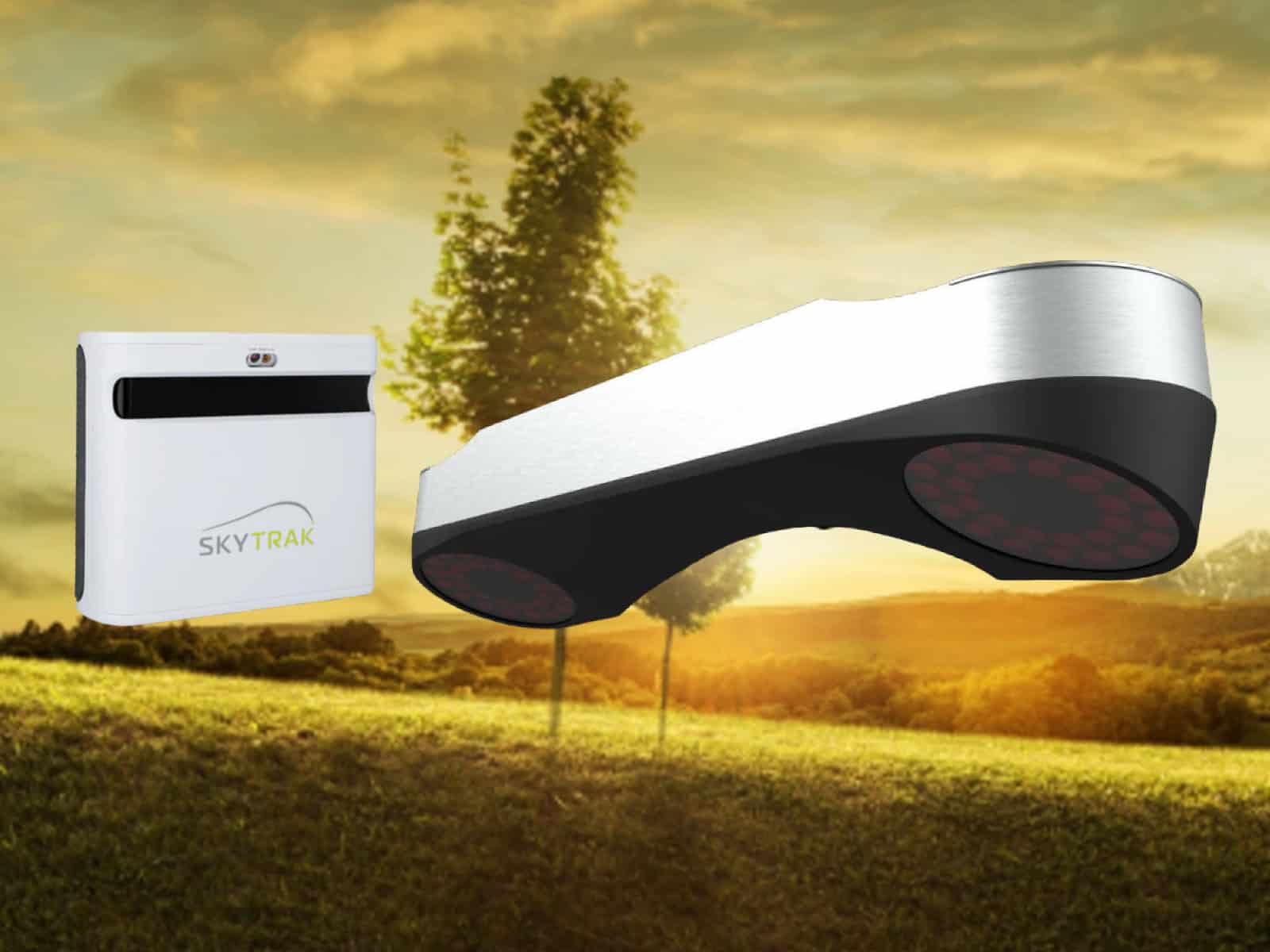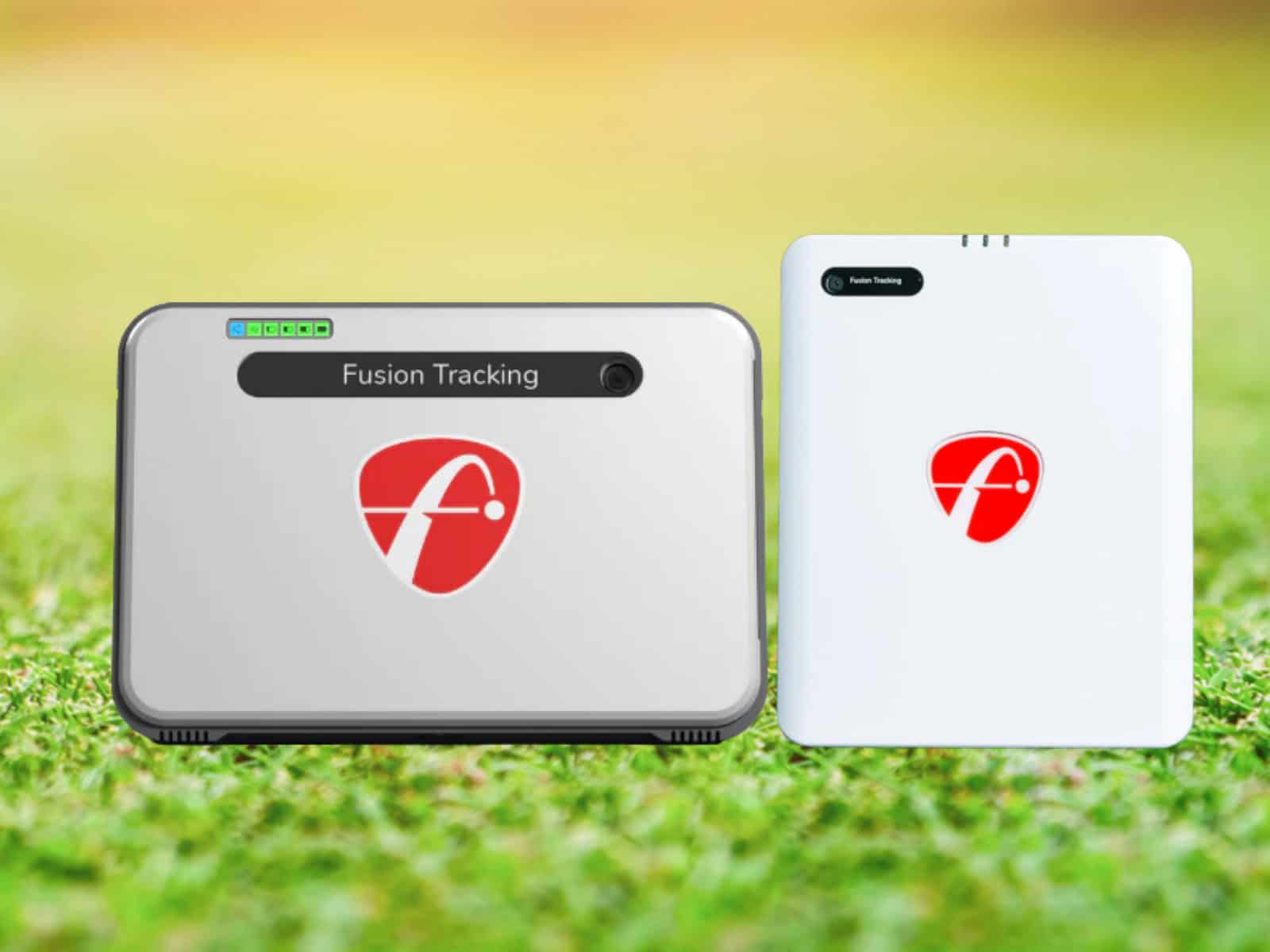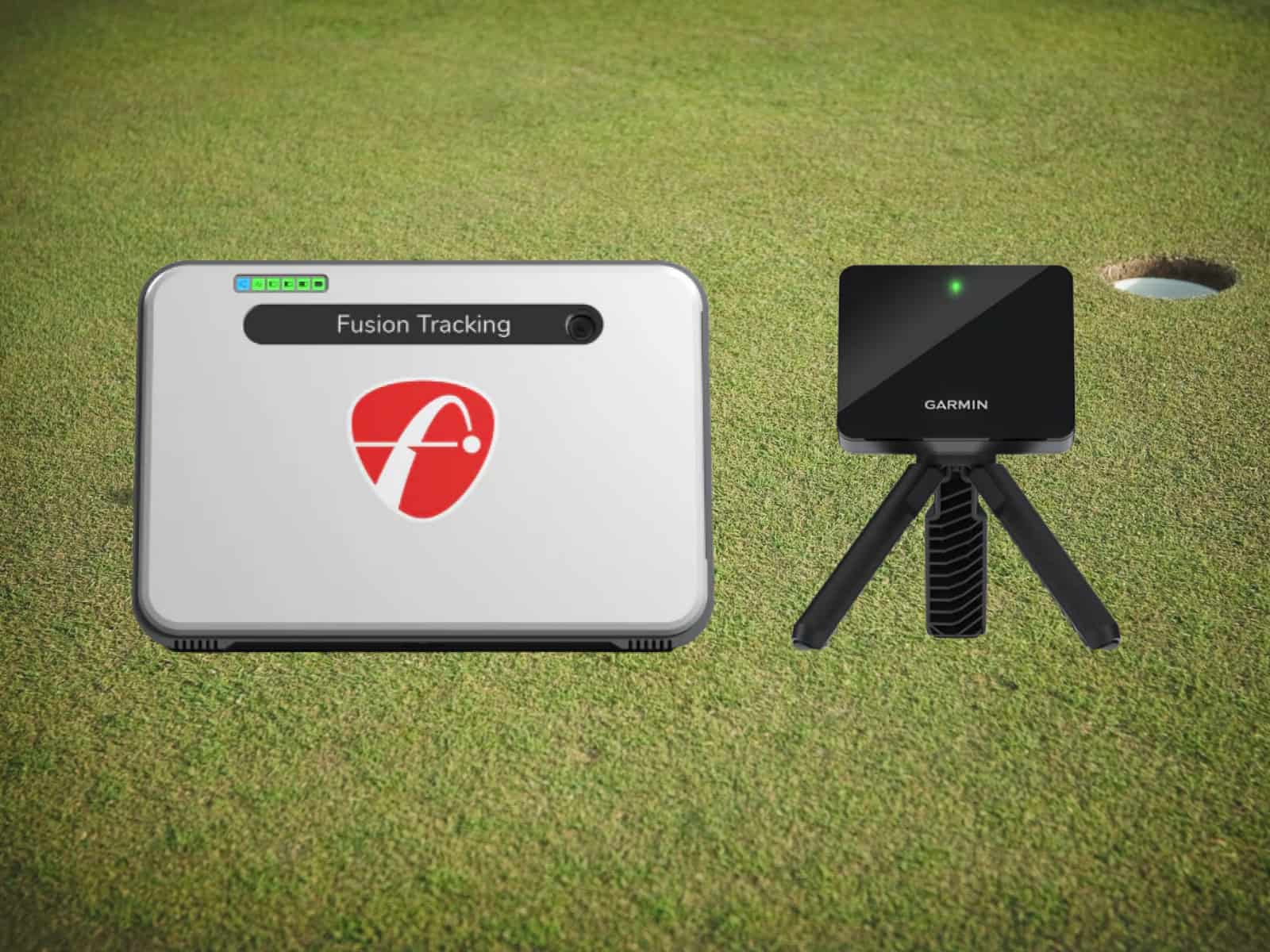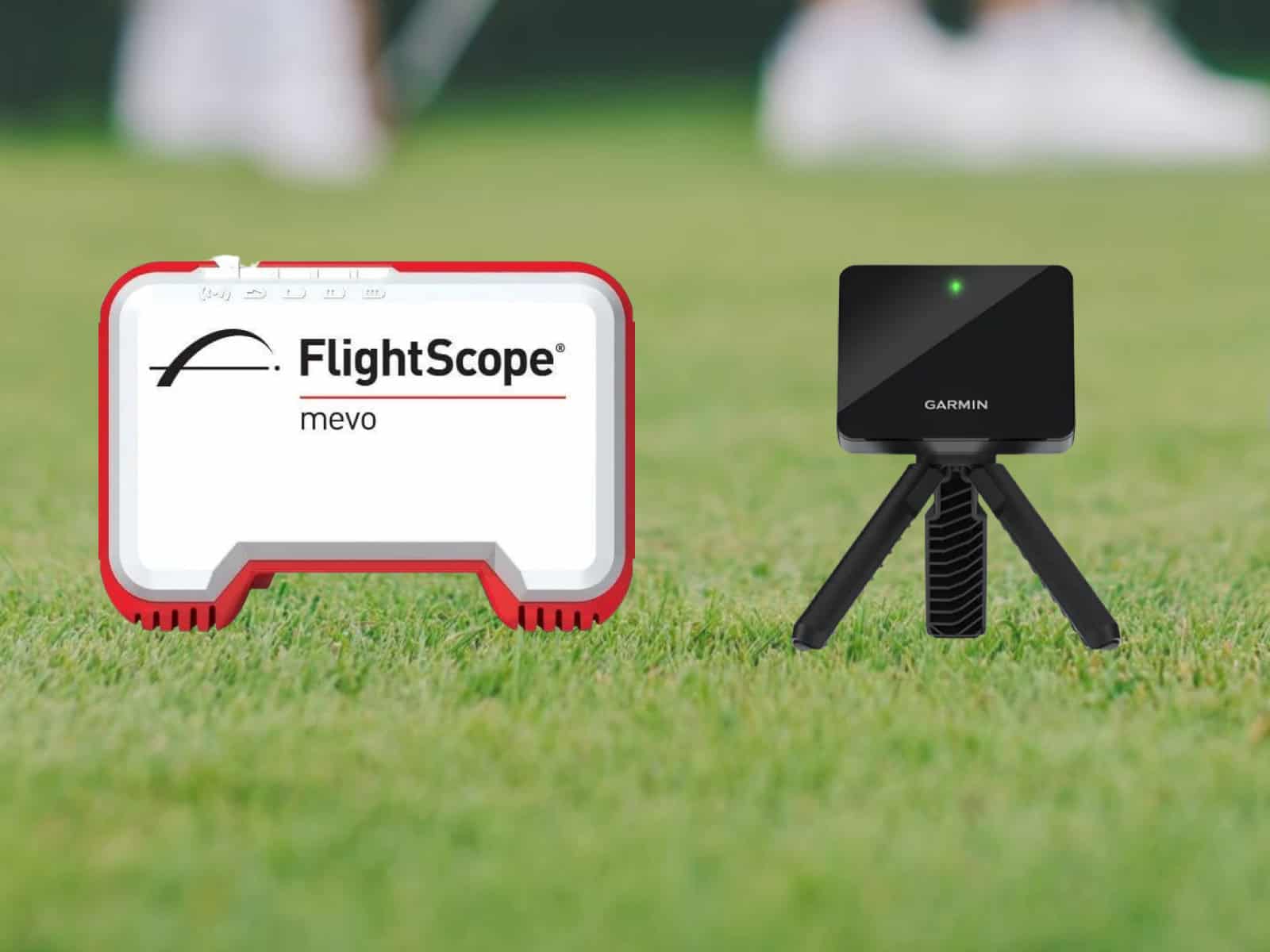Golfers are spoiled for choice these days. Launch monitors used to be locked behind pro budgets, but now you can set one up in your garage or spare room. Two names keep popping up—SkyTrak+ and ProTee VX—and both promise a sharp edge to your practice.
The devices serve different needs. One gives you portability and a lighter price tag. The other sits overhead, tracks every swing in a flash and feels built for a permanent bay. You might care more about moving it from home to the range, or you might just want instant feedback in a clean setup that never needs tweaking.
So the question isn’t which is better in a vacuum. It’s which fits your space, your budget and the way you like to play. Here you’ll see how they compare on innovation, shot tracking, accuracy, and real-world performance.
SkyTrak+ vs ProTee VX: The Short Answer
You don’t need a 20-page manual to tell the difference. SkyTrak+ is the grab-and-go option. It sits beside the ball, packs radar and camera tech into a small box and works indoors or outside. The price makes it easier to justify, and the wide sim ecosystem means you can tee off on Pebble Beach or grind on a practice range with just a tap.
ProTee VX, on the other hand, bolts overhead and stays put. It creates a wide 21″×25″ hitting zone, so you swing without worrying about placement. The reaction time is lightning fast (less than 0.3 seconds), and it tracks the clubface in detail, down to how you caught the ball on the toe or heel. That’s a big step up if you want honest feedback every swing.
So the trade is simple: SkyTrak+ saves money and moves wherever you do; VX costs more but gives you a permanent setup with deeper data and instant response. Which matters more—your wallet, your flexibility, or the raw truth staring back at you after every swing?
Tracking Technology & Innovation
Before you decide which launch monitor suits you, it helps to know how each one collects and processes your swing data. The tech behind these units makes all the difference in speed, accuracy and the type of feedback you’ll see on screen.
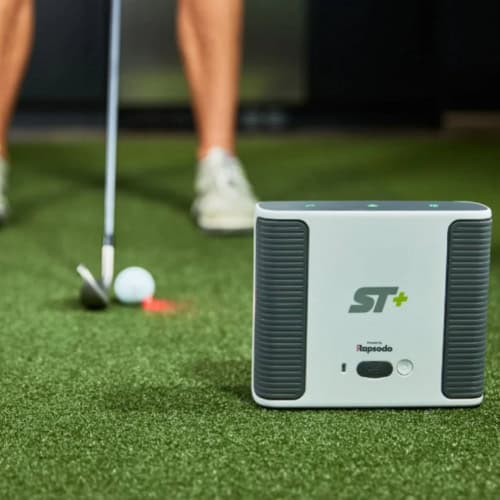
SkyTrak+: Hybrid Radar + Photometric Camera
SkyTrak+ uses two tools working together: Doppler radar and a high-speed camera.
The radar tracks the club’s movement, giving you data on speed, path and face angle. The camera captures ball launch and spin. That pairing helps reduce misreads without needing reflective dots or stickers.
Indoors or outside, you can set it beside the ball and swing with confidence that the numbers are reliable.
ProTee VX: Overhead Dual High-Speed Cameras + A.I.
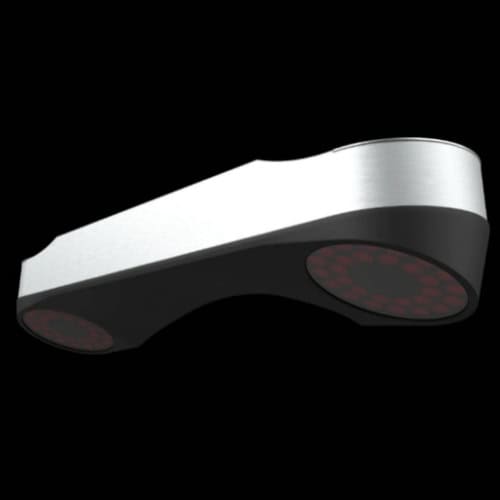
The ProTee VX mounts above you and sees everything from the top down. Two high-speed cameras capture the strike in detail, while A.I. fills in the finer points like attack angle and lie.
It builds a “virtual sticker” on the ball and club so you get data without adding anything to your gear. The result is lightning-fast readings (less than 0.3 seconds) and a fuller picture of both ball flight and club movement. It’s the kind of system that makes you double-check your swing, then nod when the screen shows what you felt.
Mounting, Hitting Zone & Player Flow
Setup impacts comfort, accuracy and how natural each swing feels. Some players want a clean floor and wide space, while others value portability above all.
Overhead Convenience (ProTee VX)
The VX hangs from the ceiling, out of sight but always watching. Once it’s installed and calibrated, you don’t touch it again. That means no bending, no nudging and no worrying about knocking the unit out of place.
The wide ~21″×25″ hitting zone gives you breathing room, so whether you’re a righty or a lefty, you swing freely without shifting hardware. The clear floor keeps the bay neat, and you feel less boxed in.
Floor-Side Placement (SkyTrak+)
SkyTrak+ sits by the ball, small enough to slip into a backpack. You’ll see a laser dot marking your hitting area, but it’s only about 2″×2″. That precision can be a blessing or a curse. If you’re left-handed, the unit must be moved to the other side, adding a small chore between players.
Careful alignment is part of the deal. Think of it like lining up a putt: get it right and everything flows, get it wrong and nothing feels square.
Latency & Read Reliability
Both systems promise quick response, but their performance feels very different once you swing.
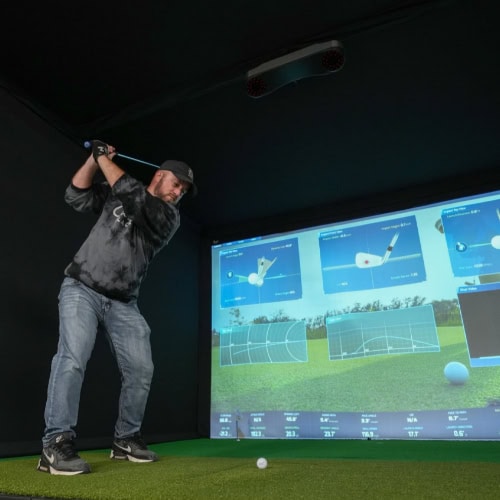
Shot Feedback Speed
The ProTee VX reacts in less than 0.3 seconds, which feels instant. You swing, look up and the ball is already flying on screen. That speed helps practice feel like real golf.
SkyTrak+ is much quicker than the original model, though you may notice a slight pause depending on the software and PC you use. It’s short, but enough to remind you you’re hitting into a simulator.
Read Consistency by Shot Type
Reliability matters as much as speed. High, soft wedge shots have long been a challenge for some monitors. The VX picks up every strike, even the floaty ones. SkyTrak+ does better than its first version, but environment and lighting can still affect whether the shot gets read.
Mishits tell another story. The VX not only measures them but shows video confirming heel strikes or ground-first contact. That kind of honesty in feedback keeps you from blaming your clubs when the swing is at fault.
Accuracy & Ball/Club Data: Real Swings Compared
To see how each system holds up, you need real swings—good ones, bad ones and everything in between. That’s where the differences between SkyTrak+ and ProTee VX come into sharper focus.
7-Iron Findings
On a mid-iron, both units showed similar carry, but the shape of the shot told a different story. ProTee VX measured side-spin close to 95, giving a slight draw. SkyTrak+ read over 1,600, showing a baby fade.
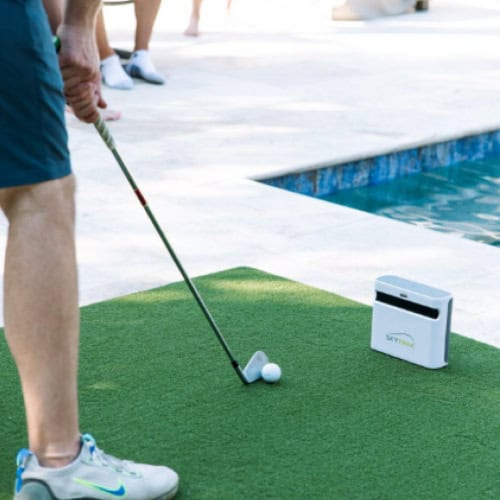
Backspin differed too: about 3,859 on VX versus 5,874 on SkyTrak+. Mishits stood out most. A fat shot showed nearly 19 yards left on VX compared to 9 yards on SkyTrak+, with VX’s video confirming ground-first contact.
Hybrid Findings
Switching to a hybrid, both carried around 152 yards. Totals leaned a touch longer with VX at 168 versus 164. Slice patterns separated them. VX showed a face 0.9° open with an outside-in path, matching the ball’s curve. SkyTrak+ showed a softer fade and missed some of that shape.
Wedge Findings (56°)
High, soft wedge shots often trip up monitors. The VX read every one, logging small but real side-spin values between 150 and 285 right. SkyTrak+ sometimes showed zero side-spin, even when the ball started right.
Both reported backspin around 4,500–4,600, but only VX caught the subtleties. Its ball-logo video confirmed those spins were real.
Driver Findings
With the driver, the differences widened. VX tracked a high-toe strike and reported a face-to-path of 6.2° open. That explained the left curve by gear effect. SkyTrak+ only showed side-spin, missing the clubface story.
On a slice, VX showed 22.8 yards offline versus 19 on SkyTrak+, a truer reflection of the swing. That detail leaves you wondering what else your swing might reveal under the brighter spotlight.
Software & Simulation Ecosystems
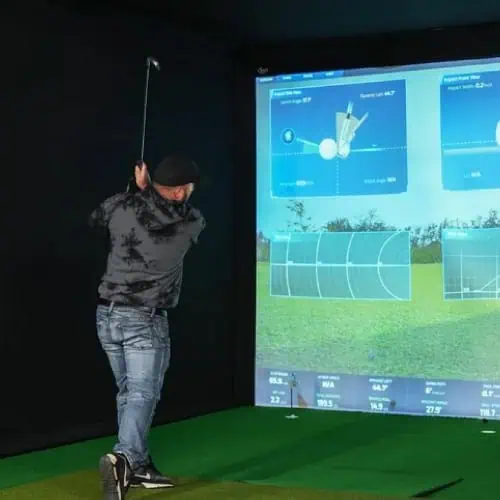
The hardware is only half the story. What really shapes your day-to-day use is the software you can pair it with. Games, practice tools and community integrations determine whether you’ll feel locked in or free to experiment.
SkyTrak+
SkyTrak+ comes with its own Course Play option, but the real draw is its long list of third-party titles. You can link it with E6 CONNECT, TGC 2019, Creative Golf 3D, or ProTee Play. Many players also run GSPro through a community-made connector.
There’s a catch, however, as most of these require an active SkyTrak membership, so the low upfront price balances against ongoing fees. Still, you end up with flexibility and a big library of courses to tee off on.
ProTee VX
The ProTee VX skips the subscription requirement for core data. It connects smoothly with major platforms like GSPro, TGC 2019 and E6. Because the unit sits overhead, alignment is already squared up, so the shot rendering in sim play feels natural and fluid. That tight link between hardware and software makes the experience feel less like “loading a game” and more like stepping into a bay ready for action.
Price & Total Cost of Ownership
SkyTrak+ often sells for around $1,995. That low entry cost makes it attractive if you want a solid monitor without draining your wallet. The tradeoff is subscriptions. Many sim features and advanced data live behind a membership, so you’ll be adding yearly fees to keep everything unlocked. Still, for the flexibility you get, the math often works in its favor.
ProTee VX sits on the other end. At roughly $6,500, it asks for a bigger upfront bite. On the flip side, it doesn’t tack on required data subscriptions. What you see is what you get. However, expect higher installation costs and a stronger PC to drive the graphics. That means your true investment goes beyond the unit itself.
Setup, Space & PC Requirements
The best launch monitor isn’t just about accuracy; it has to fit your room and your tech setup. If you misjudge ceiling height or your computer’s power, you’ll feel it every swing.
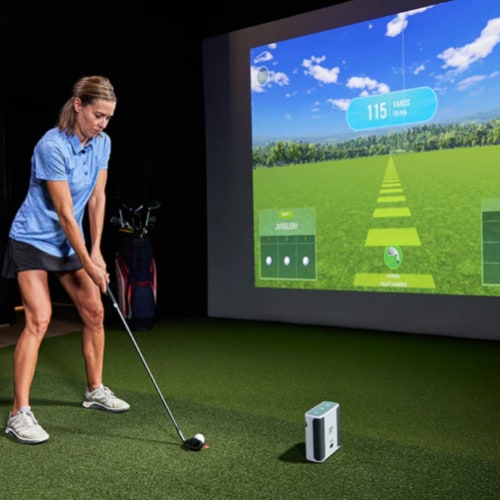
SkyTrak+
SkyTrak+ shines in simplicity. You can set it on the floor, connect to the app and start swinging within minutes. It works indoors or outdoors on a hitting mat, giving you freedom to move it where you want.
The app runs on Windows, macOS, iOS, and Android, so you’re not tied to one platform. For simulation graphics, a mid-level GPU like a GTX 1650 or RX 580 is plenty for 1080p play. If you want sharper visuals at 1440p or 4K, you’ll need a stronger graphics card to keep the swing-to-screen feel smooth.
ProTee VX
The VX expects more from your space. It mounts on the ceiling and works best with 9’–10′ of height and around 16′ of room depth. That’s the kind of commitment that suits a permanent bay. Since it runs only on Windows, your choice narrows to a PC build. To push crisp simulation graphics, plan for a stronger GPU—an RTX 3060 or even a 3080 if you want higher resolutions. The payoff is a setup that feels like a dedicated golf studio.
Who Each Is For
If you want portability, SkyTrak+ fits the bill. You can drop it beside the ball indoors or haul it outside to a mat. The lower price makes it easier to justify, and its wide sim support means you can experiment with different software without locking yourself in. For golfers who want flexibility without the fuss, this unit checks the boxes.
ProTee VX belongs in a permanent bay. Its ceiling mount clears the floor, its large hitting zone frees both righties and lefties, and its feedback speed feels instant. Add in the deeper club and impact data, and it starts to look less like a gadget and more like a studio tool. If you’re chasing every detail of your swing, this is the route to take.
Where to Buy?
Buying the right launch monitor is only half the battle—you also need a trusted retailer. The seller you choose affects your warranty, support and even financing. Here are four well-regarded options worth considering.
Rain or Shine Golf
Rain or Shine Golf is known for strong customer service. They often bundle SkyTrak+ or ProTee VX with hitting mats, nets or full enclosures. Their financing plans make it easier to spread out payments, and they back purchases with responsive support if anything goes sideways.
Shop Indoor Golf
Shop Indoor Golf carries both units and offers complete simulator packages. They specialize in custom builds, so if you’re piecing together a home bay, this is a good place to start. You’ll also find frequent promotions and a broad range of hitting screens and accessories.
Top Shelf Golf
Top Shelf Golf focuses on competitive pricing. They often match or beat other retailers and provide straightforward package options for different room sizes. For golfers who like a simple shopping experience without endless upsells, this store hits the mark.
Carl’s Place
Carl’s Place is a favorite for DIY simulator builders. Their enclosures and screens are widely used and well-reviewed. Pairing a SkyTrak+ or ProTee VX with one of their setups gives you a professional look without paying for a full custom build.
Frequently Asked Questions
Before making your decision, you’ll likely have a few lingering questions. Here are the most common ones golfers ask when weighing SkyTrak+ against ProTee VX.
Do I need special balls or reflective stickers for either system?
No. Both units can read a plain golf ball. Just keep the lenses clean and, for the VX, make sure the lighting in your hitting area is even.
What ceiling height and room depth are recommended for a ProTee VX install?
Plan for ceilings around 9 to 10 feet high and a room at least 16 feet deep. This gives you comfortable swing space and reliable reads.
Will SkyTrak+ work without a gaming PC?
Yes. You can run the SkyTrak+ app on iOS, Android, Windows, or macOS. A strong PC is only needed if you want high-end sim graphics.
How sensitive are these systems to lighting conditions?
The VX likes consistent bay lighting and a matte hitting strip. SkyTrak+ is more forgiving but avoid shining lights directly into its camera window.
Can either system show impact location on the clubface?
The ProTee VX can. It shows where the ball met the face and ties that to path and angle. SkyTrak+ does not provide that level of detail.
Final Thoughts
Both launch monitors deliver, but in very different ways. SkyTrak+ is the easy grab-and-go option. It’s light on the wallet, simple to set up and flexible enough to live indoors or out. ProTee VX, on the other hand, is built for permanence. It thrives in a dedicated space, offering instant feedback and a depth of swing data that scratches the itch of the detail-driven player.
Think of it like choosing between a trusty carry bag and a custom-fitted tour bag. One gives you freedom to move. The other gives you every tool in perfect order. Your budget, space and style of practice decide which camp you belong in.
So before pulling the trigger, ask yourself this: do you want convenience, or do you crave the richest data your swing has ever seen?
If you’re also weighing other portable launch monitors, check out our SkyTrak+ vs Garmin R50 comparison.


